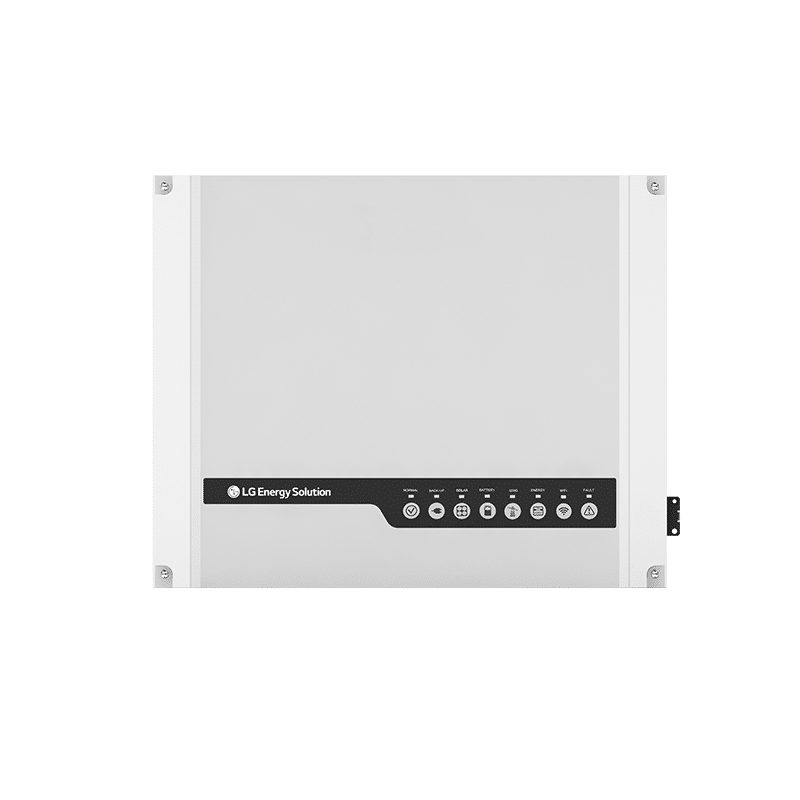Why do I need a solar inverter?
An inverter is a critical part of any Solar Energy system.
When the solar panels do their magic to convert all that lovely daylight into electricity, they produce DC power which then needs to be converted to AC for use in your home via an inverter.
Nowadays the only country we can find that still uses DC power is Argentina. This is down to safety issues.
A DC current is direct, it travels ‘one way’ through cables. The problem with this is, if you are unlucky enough to grab that cable, and it’s not insulated, you won’t be able to let go as the electrify will travel one way through your arm, to earth, causing your muscle to contract.
The UK and most of the rest of the world use the much safer AC, alternating current, electricity. This travels both ways through the cable, switching between directions 50 times a second (50hz). This means you would be thrown clear if you touched a raw cable.
That said, the DC current coming out of your panels is not going to harm you, but it does needs converting to AC if you want to use it in your home.
Learn more about inverters in the video below by our lead technician Chris Sparkes.
What else does an inverter do?
- Monitors electricity production levels
- Feeds AC electricity to the grid
- Directs DC energy to battery storage
- Monitors the efficiency of solar panels
- Detects faults in the system
- Maximises energy output
What Types of Inverters are available?
Micro Inverters
These are small units that attach to each separate panels, which makes them great when you have a small, portable solar array.
If you have multiple panels, it can work out a bit pricey to attach a micro inverter to each panel as they cost between £50 and £150 each.
String inverters
String Inverters can be connected to multiple panels so they can consolidate, and convert, the power from your whole array.
the disadvantage with String Inverters is they can only perform at the same level as the worst performing panels you have.
So, if one panel is in the shade, it will bring down the total power output of your system.
Hybrid inverters
Most modern Solar installations will come with a hybrid inverter, as they are by far the most practical and easy to use inverter for domestic use.
A hybrid inverter contains bit a string inverter and a current converter.
The string inverter does what a string inverter does by converting the DC produced by the panels into AC for use in the home. The converter will regulate some of the DC current and send it to your battery storage.
What are Watts & Amps?
To fully understand an inverter, we need to just explain what the units of electricity are.
Watts
Watts are, simply put, a unit of power. It’s the amount of power a device needs to function.
You can work out what a watt is by timing the voltage by the amps – usually denoted on a sticker on the case somewhere.
So, if a device needs 12 volts at 10 amp, it needs 120 watts to work.
Watt-hours or kilo-watt hours.
So, using our previous example, if we have a 120-watt device (0.12 kW), and you used it for 30min it would be using 0.6 kWh.
It’s that simple.
Amps
An amp is the electrical current.
It will be the same at any given moment -amps are important because they determine the size of your cables and components.
Basically, if the wires or cables are too thin, a high ampage current will heat the wire up, due to resistance, and could start a fire.
To get well techy – a Coulomb is the charge of 6.24 x 1018 electrons making 1 Amp the same as 6.24 x 1018 electrons passing a point in a circuit in 1 second.
But you don’t need that much info!
Amp-Hours
Amp-hours are especially important, as it’s how we measure battery capacity.
The more amp hours your battery is labelled, the more power you can draw from it in an hour.
So, what are the best inverters?
Let’s take a look at some of the inverters on the market right now:
| Inverter | Input Voltage | Output Voltage | Dimension (WxHxD)) | Rated/Peak Power | Display | Weight | efficiency | Warranty | Price |
|---|---|---|---|---|---|---|---|---|---|
| The Fronius Primo 3.6kW Inverter Light | DC 170 v | AC, 230 v | 645x431x204mm (WxHxD) | 5000 w | LED+LCD | 21.5kg | 98% | 2 years, increasing to 7 years once registere | £1,054.80 (INC VAT) |
| SolarEdge – SE6000H 6.0kW Inverter | DC 380 v | AC, 183 – 264 v | 17.7′ x 14.6′ x 8.6′ (LxWxH) | 6000 w | Smartphone app | 26.2 lbs | 99 % | 12-year warranty extendable 25 years | £1,379.30 |
| LuxPower Hybrid Inverter LPX 5K ACS | DC, 140 v | AC, 180 – 270 v | 455 x 476 x 181 mm | 5000 w | LED+LCD | 20kg | 97.5% | 10 Years | £1,450 |
| Huawei Sun2000 5k | DC, 200 v | AC, 230 v | 525x470x146.5mm | 5000 w | LED+LCD | 17kg | 97.5% | 10 Years | £1,100 |
| SMA Sunny Boy 5.0 | DC, 125 v | AC, 230 v | 435x470x176mm | 7500 w | LED+LCD | 16kg | 96.5% | 10 years | £1,500 |
| Growatt MOD10-15KTL3-X | DC, 200 v | AC, 220v-380v v | 425x387x178mm | 10000 w | Touch key+ OLCD | 14kg | 98.1% | 10 years | £1,400 |
| Sungrow SG10RS | DC, 600 v | AC, 230v- 400 v | 370x485x160mm | 10000 w | LED, Bluetooth + APP | 20kg | 98.6% | 10 years | £1,500 |
| SolaX X1 Hybrid 7.5kW G4 Inverter | DC, 600 v | AC, 230/240v | 482x417x181mm | 7500 w | LED, app and keypad | 25kg | 97.6% | 10 years | £1,500 |
| Solis 5kW Hybrid 5G Inverter | 600 v | AC, 200 – 850v | 535x455x181mm | 5000 w | LCD | 25.1kg | 98.4% | 10 years | £1,063 |
| LGES-5048 hybrid inverter | DC, 500 v | AC, 230 v | 516x440x184mm | 7500 w | Touch Button | 30kg | 97% | 10 years | £ N/A |
The Fronius Primo 3.6kW Inverter LIGHT
Fronius is an Austrian company, and their excellent Inverters constantly top the charts when it comes to domestic installations.
Popularity can lead to supply problems though and the UK distribution team have had a few import issues.
But, the quality of the inverters, plus the aftersales care and customer service has always made up for any minor problems caused by shipping delays.
Fronius Solar Inverter – Good bits and Bad Bits
The new generation of Fronus inverters are fitted with a unique fan-forced cooling system.
Being an Australian manufacturer keeping things cool is particularly important and a fan-forced cooling system extracts heat at a higher rate than a heat sync.
As electronics have a maximum operating temperature, this helps the inverters to avoid overheating and therefore prolongs the life of the inverter.
Fronus inverters also feature an integrated DC isolator, for extra safety and they are constructed using a unique ‘snap-in design’ which makes servicing and installation much easier.
Fronius offer SolarWeb – which is an online monitoring portal that connects to the Fronius Smart Meter.
While Wifi monitoring is standard with Fronius inverters via the Solarweb, Fronius Smart meter is an expensive addition but will allow you monitor your complete home energy system.
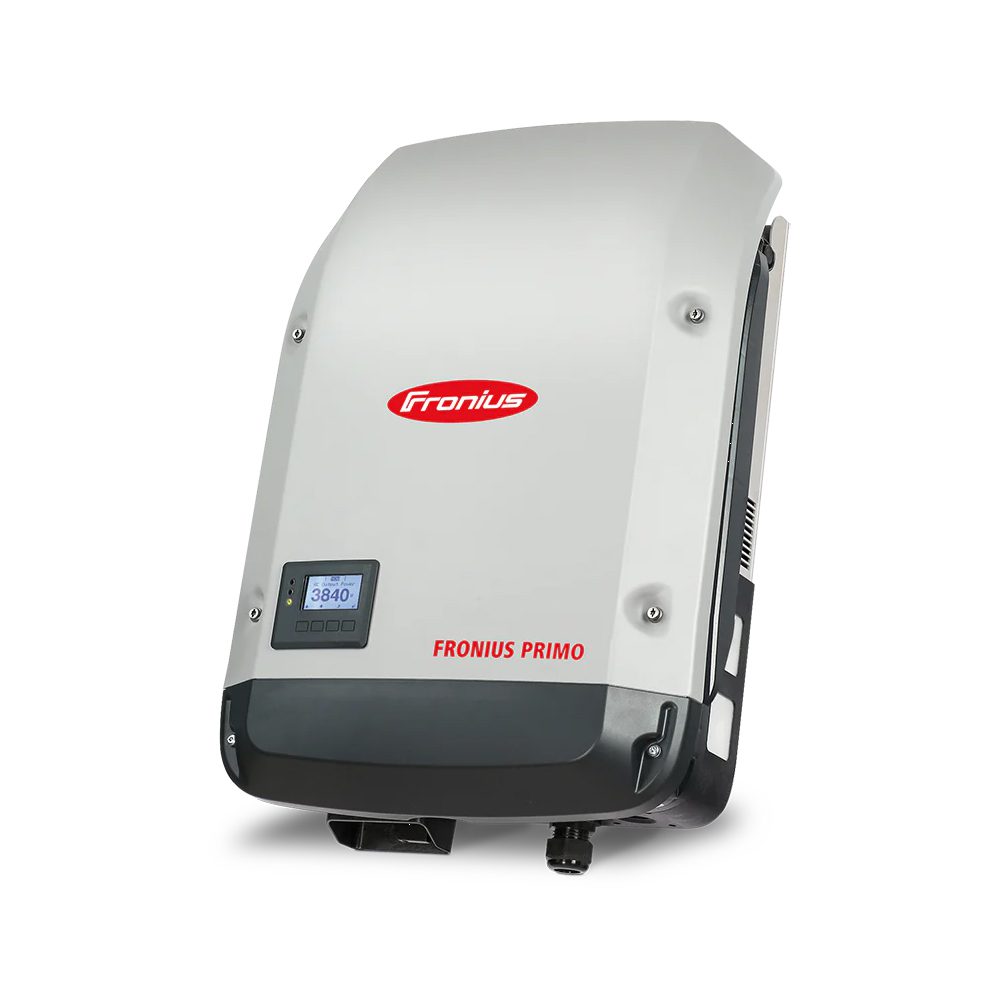
SolarEdge – SE6000H 6.0kW Inverter
SolarEdge have a reputation for being one of the most efficient, reliable, and cost-effective string inverter manufacturers around today.
They have been achieving some pretty good efficiency ratings – you can’t get much more efficiency than 99% and that’s what SolarEdge give you – in comparison to most, affordable, string inverters that come in at 93-96%.
More efficiency means more power from your panels.
SolarEdge Solar Inverter – Good Bits and Bad Bits
SolarEdge inverters also work in tandem with their power optimisers to suck every little bit of power out of those solar panels.
This SolarEdge inverter is compatible with any AC coupled battery, which is good if you have one, but will mean adding in a power converter if you don’t.
This does mean the SE6000H 6.0kW Inverter is also suitable for a Zappi EV charger – which is handy.
We’re all about keeping the energy you produce though, and with the SolarEdge Inverter you won’t be affected as much when panels are in shaded areas, in multiple orientations or if you have mis-matched panel mismatching because the optimisers maximise your PV power. Furthermore, you can choose a layout to suit your desired aesthetics and energy needs.
Another plus is the warranty, while a good warranty for an inverter is usually 5 – 10 years, SolarEdge are giving you 12!
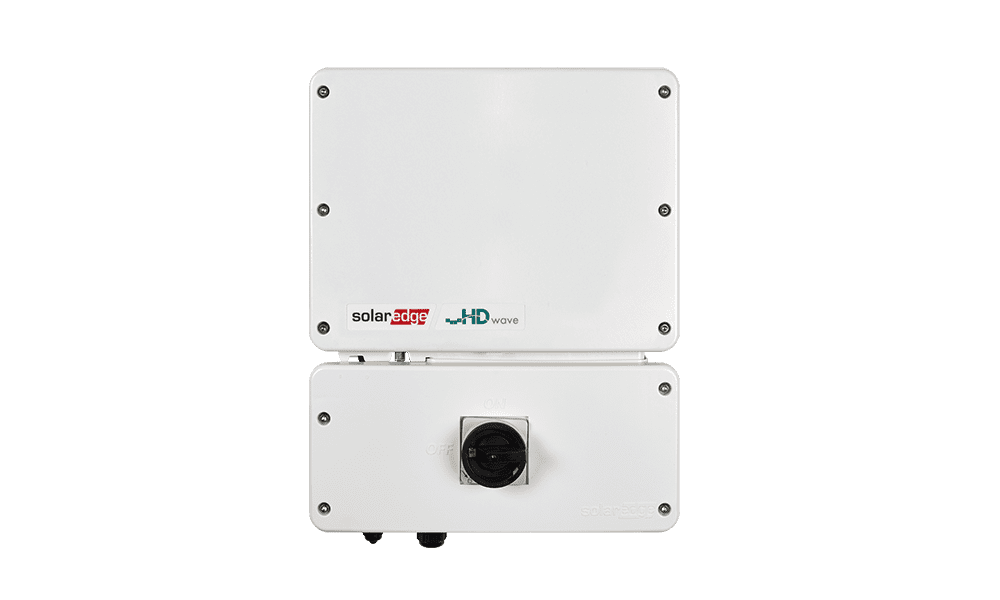
LuxPower Hybrid Inverter LPX 5K ACS
LuxPower is always a name you can rely on.
While they don’t make a lot of noise like Tesla or LG, they quietly supply some of the best, most advanced solar equipment on the market.
Founded in 2017 by a bunch of engineers dedicated to offering the most advanced solar technology to create a carbon neutral era.
Consequently, Luxpower has become one of the top solar inverter suppliers in the industry.
LuxPower Solar Inverter – Good Bits and Bad Bits
The LuxPower Inverter is a jack of all trades and a master of most!
It is compatible with most DC batteries so you can be very flexible when it comes to putting your solar system.
LuxPower have developed intelligent working modes to regulate self-consumption, forced time charge/discharge, utility first and even an off-grid mode.
Strong EPS power to ensure the uninterrupted supply of your critical loads;
60kW maximum output due to the single phase and three phase parallel configuration.
Plus, they are suitable for both indoor and outdoor use.
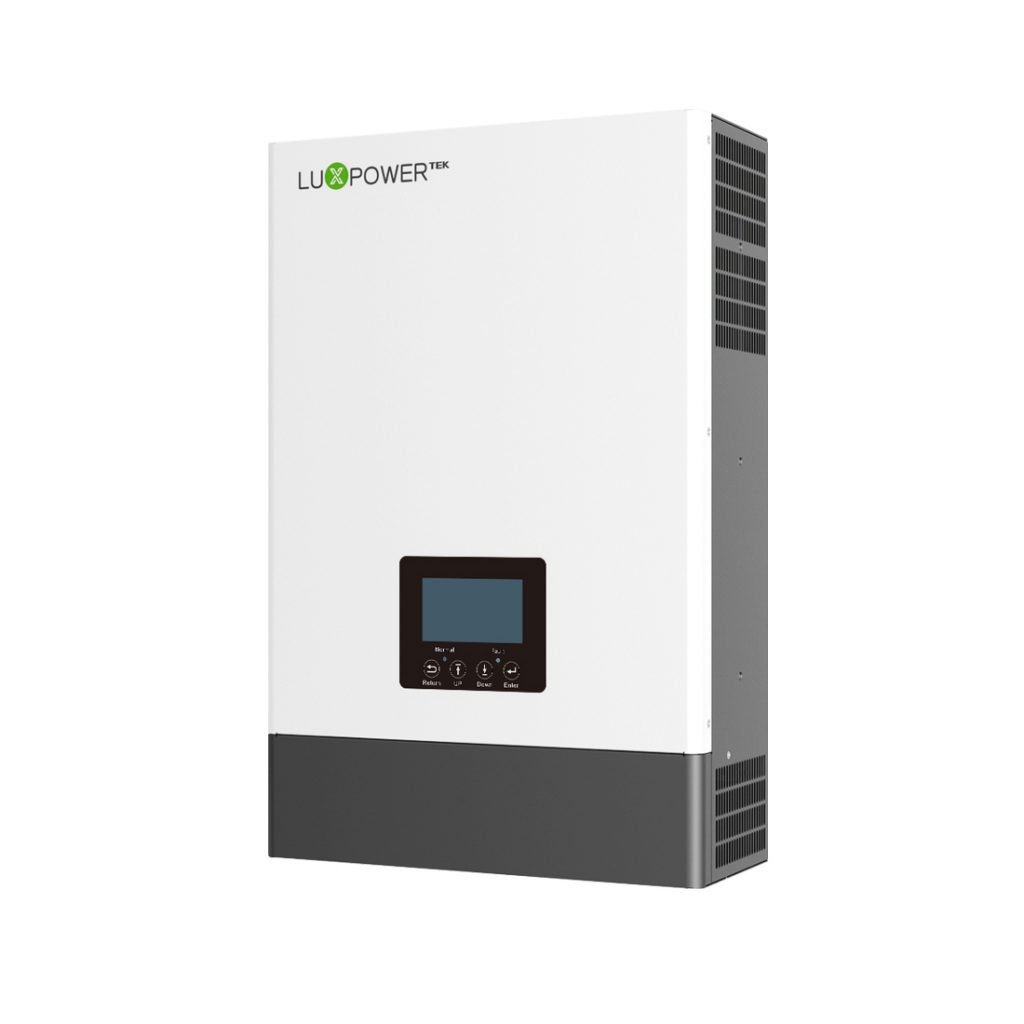
Huawei Sun2000 5k
Don’t tell Trump but Chinese communications giant Huawei are picking up some great praise for their compact, lightweight solar inverters.
The massive increase in the sale of commercial & utility-scale inverters, Huawei is fast become one of the leading Solar appliances providers, investing billions in research and producing some of the most reliable equipment available.
Huawei Solar Inverter – Good Bits and Bad Bits
The Huawei SUN2000L-5KTL-L1 can combine the energy generated by your panels with that from your batteries – so you can supply the power you need.
Plus, the built-in storage interface let you install batteries without any extra elements.
While Huawei have developed some of their hybrids to work on WiFi, most of the range only has a WLAN or Dongle capability.
The big bonus is Huawei’s increased focus on safety mean the new Huawei optimisers offer advanced arc fault detection (ACFI) and rapid shut down in the event of damage or a fault in the solar array.
This AI-powered AFCI detection system has proven itself to be one of the most reliable and effective systems currently available.
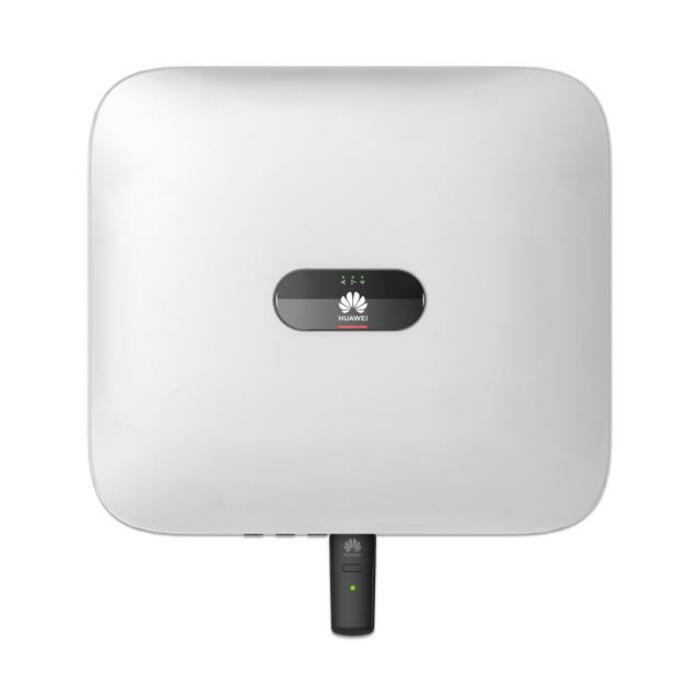
SMA Sunny Boy 5.0
SMA have been at the forefront for solar energy tech for over 25 years.
They had a bit of a dip in sales a few years ago because they moved manufacturing to third party suppliers. However, they have since relocated back to Germany and flourished in both sales and design.
Their aim is to make sure solar energy systems are easy to install, upgrade and repair.
They have some pretty funky looking appliances too.
SMA Solar Inverter – Good Bits and Bad Bits
The Sunny Boy is as useful as it is colourful, but it is much more than an inverter that generates green-energy.
The unique monitoring software checks the system in real-time. IT checks all the various parts of the solar system, picking up any problems and flagging them up to the user.
The cooling heatsinks, and the fact there is no transformer, make these units very lightweight.
The inverter can be combined with any energy-storage solution and has been designed to be as versatile as possible.
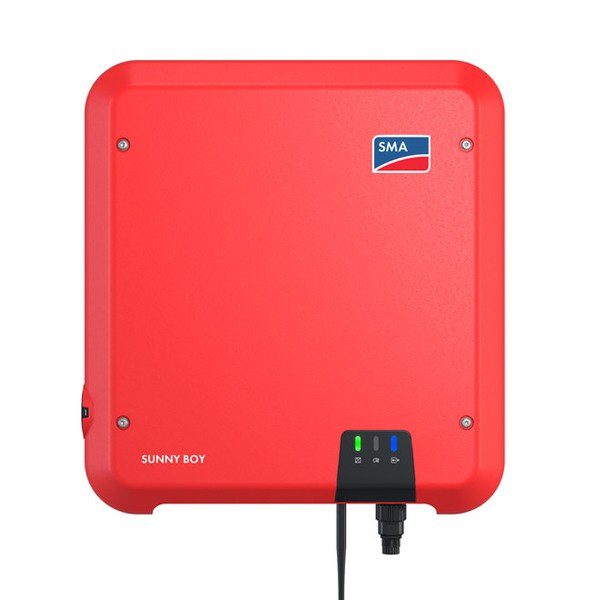
Growatt MOD10-15KTL3-X
Growatt are one of the most respected names in the solar industry, striving for better efficiency, quality and overall excellence.
Their team of 400 engineers agree always beavering away in their labs to bring the public better, more affordable solar.
Growatt’s MOD range is perfect for domestic installation as it is small, compact and easy to install.
Growatt Solar Inverter – Good Bits and Bad Bits
As we’ve mentioned, the Growatt MOD generation of photovoltaic inverters is percet for smaller, indoor installations.
They cool themselves naturally, using heatsinks, so no fan to generate low-level noise.
No fan also means no moving parts, no moving parts means very little, if any, maintenance.
The screen has no backlight to worry about as OLED screens generate their own light, and there is an optional WiFi provision.
The DC Safety unit and AFCI monitor the voltages within the unit and keep everything working at the correct levels.
The only downside we have seen to this inverter is the App is not receiving any love online – it is buggy and unreliable.
But we imagine Growatt will have that sorted before long.
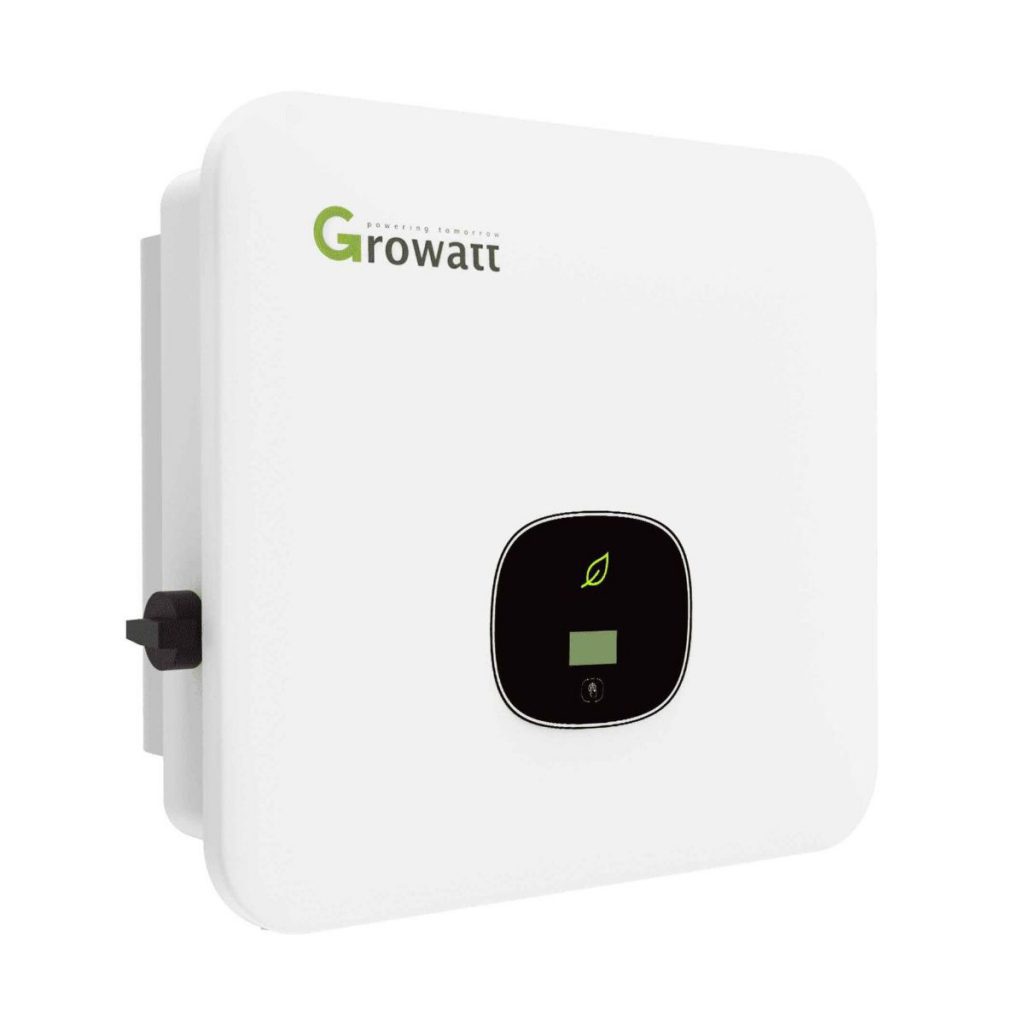
Sungrow SG10RS
Sungrow are one of the few solar appliance manufacturers that did not evolve from a previously established electronics company.
It was started in 1997 by CEO Cao Renxian, professor at Hefei University with a passion for renewable energy and providing it to the rural areas of western China.
Sungrow’s interest in renewables means their research and development has catapulted them into the top 3 solar manufacturers in the world.
They also actively participate in schemes to alleviate poverty, increase disaster relief, and improve community welfare practices.
Sungrow Solar Inverter – Good Bits and Bad Bits
The new, sleek modern design of the SG series makes it as attractive as it is useful, but it’s not just a pretty case, it’s super practical too.
The new SG-RS series has been fitted with a built-in, smart PID recovery function.
What this means is the string inverter will make allowances for the degradation of your solar panel – as all panels will degrade over their lifespan, this feature is real step forward and will eventually eliminate the need for optimisers.
As the information about the productivity is constantly monitored, the Sungrow SG10RS also has IV curve scan capabilities for advanced diagnostics that will pick up any problems occurring within your system.
The heatsink ensure the noise is at a minimum and, as stated before, the SG10RS is pretty slick looking.
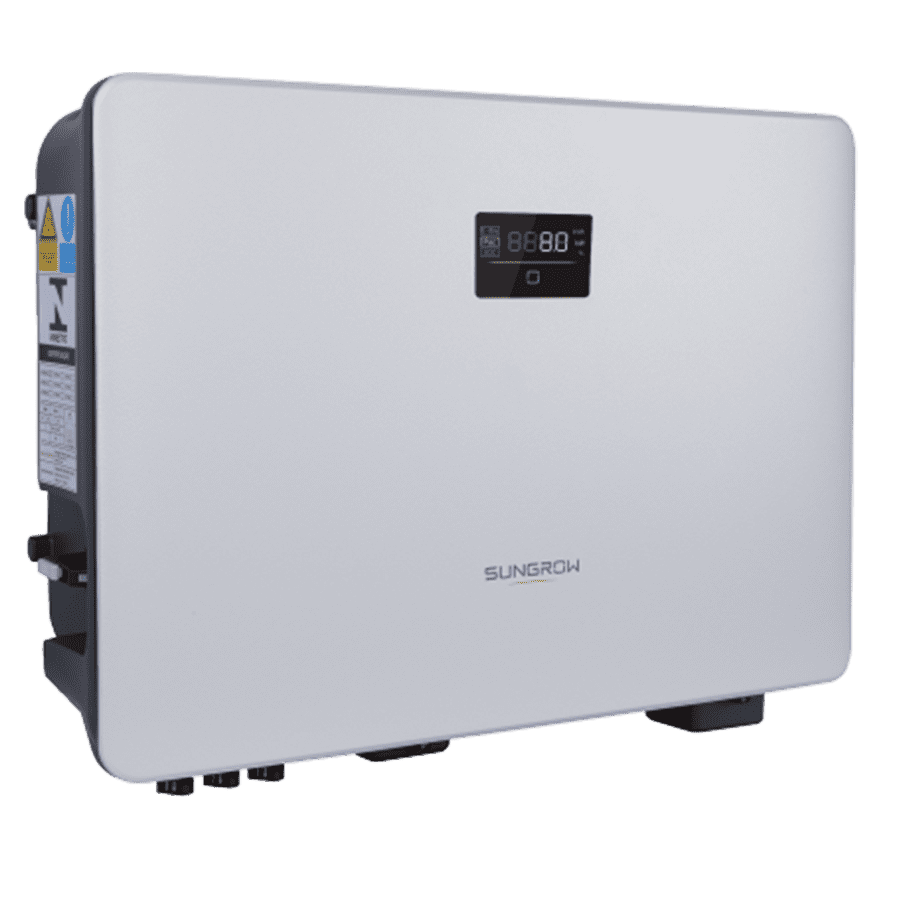
SolaX X1 Hybrid 7.5kW G4 Inverter
SolaX have been a big player in the solar industry for about 20 years now and they are one of the most innovative companies out there.
What marks them out is focus on inverters above all else, meaning they often lead the others on tech, ideas and design.
SolaX Solar Inverter – Good Bits and Bad Bits
The SolaX X1 Hybrid 7.5kW G4 is a fantastic example of this.
It has retained some of the excellent features of the 3rd Generation and added a whole host of new bells and whistles.
This ground-breaking SolaX inverter goes the extra mile by including a battery in its design and an energy control system.
The X1 Hybrid 7.5kW G4 directs your electricity to either the in-built storage facility or back to the grid plus it supports up to 150% PV oversizing and 110% overload output.
Comes with a WiFi dongle too!
We guess the only downside of this set up is when something goes wrong and you must replace the whole unit, including the battery.
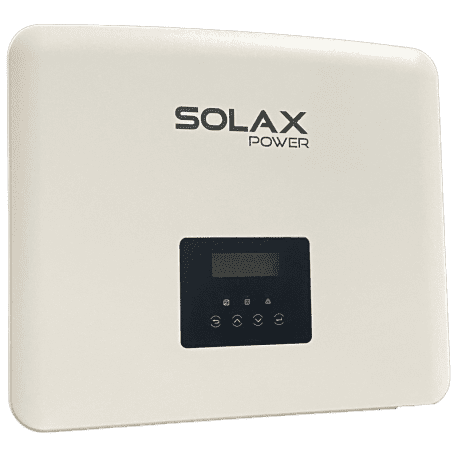
Solis 5kW Hybrid 5G Inverter
Gotta say, these manufacturers names are getting a bit confusing, SolaX, Solis, Solar Edge etc!
Anyway, Solis are another big, well-trusted name in the world of Solar Energy production.
Solis Solar Inverter – Good Bits and Bad Bits
The great thing about Solis’ new 5G Hybrid inverter range is they can be remotely controlled AND upgraded due to the way the software works.
Obviously, this means they have great WiFi provision to ensure that software can be checked, and your system can be reconfigured if needed.
That’s not the only cool thing about these inverters though – Solis have just announced they are supplying 3 phase meters within the box, making the 5G hybrid even more versatile.
Coming with a high charge and discharge efficiency rate plus multiple work modes to ensure maximum self-consumption, there is not a lot to dislike about this inverter – it’s even reasonably priced.
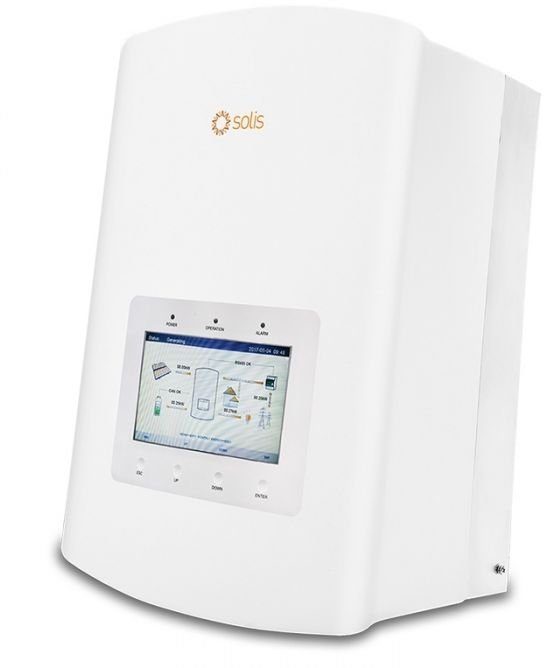
LGES-5048 hybrid inverter
LG had a bit of a wobble during the COVID-19 pandemic and had to start limiting production.
They stopped producing a lot of their PV appliances and there was a danger the company would go under.
But, LG is back on track now and slowly reintroducing products into the renewable energy sector.
Like the LGES-5048 hybrid inverter.
LG Inverter – Good Bits and Bad Bits
The LGES-5048 hybrid inverter has been specially designed to work in both directions, in a way.
Like all other inverters it directs the energy produced by your pV panels to either your home, your battery or the grid. The difference with the LGES-5048 is it will also charge your battery from the grid if it senses the panels aren’t performing like they should.
It can be controlled using an external remote control or an app and is designed to fit in with existing LG products as well as other systems that can handle grid charging.
The biggest problem with this inverter for us, is it’s not available in the UK yet – but it will be.
